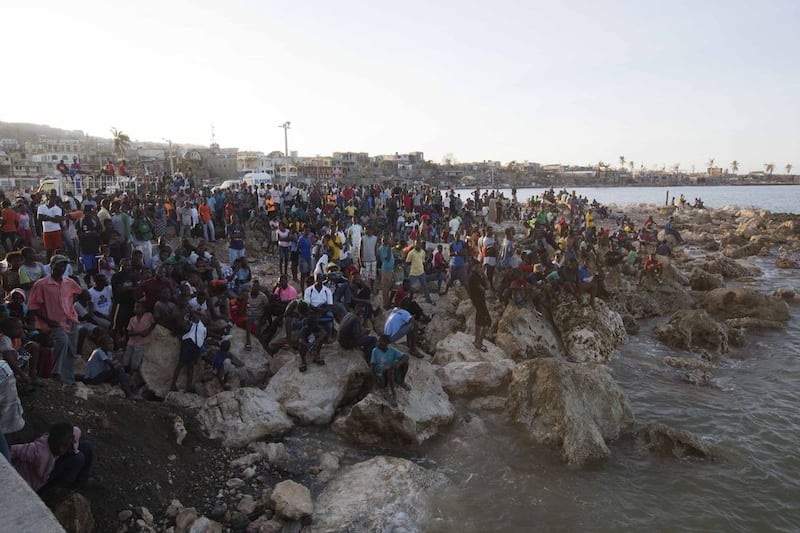AN international response to the staggering blow delivered by Hurricane Matthew was finally getting underway in south-western Haiti as authorities still try to gauge the full extent of the death and destruction.
"It's beginning to pick up now," said Stephane Rolland, a regional co-ordinator for the International Federation of the Red Cross, as workers unloaded blankets, soap, bleach and other critical items in Jeremie.
There are clearly limits, though, including the fact that the airstrip in Jeremie is unable to accommodate large cargo planes, and only operates in the daytime.
Many of the villages in the south-western peninsula are difficult to reach and people are growing increasingly desperate after losing everything when the storm ripped through the area on Tuesday.
One woman stared with outstretched arms as a United Nations convoy drove through town. "I am hungry. I hope they can help," said Fabienne Charles, who would normally be working as a market trader but lost her supplies in the storm.
The precise death toll from the storm remained uncertain. Guillaume Silvera, a senior official with the Civil Protection Agency in the Grand Anse Department, which is on the tip of the southern peninsula and includes the city of Jeremie, said 522 deaths had been confirmed, not including several remote communities that they have yet to reach because of collapsed roads and bridges.
"We think the numbers will have to go up," he said.
Civil Protection headquarters in Port-au-Prince, meanwhile, said its official count for the whole country was 336, which included 191 deaths in Grand Anse.
Death tolls are frequently difficult to tabulate in the immediate aftermath of a natural disaster in any country, though it is particularly difficult in remote and mountainous south-west Haiti.
Government officials estimate that at least 350,000 people need assistance, and concern was growing over an increase in cholera cases following widespread flooding unleashed by Matthew.
An ongoing cholera outbreak has already killed about 10,000 people and sickened more than 800,000 since 2010, when the infectious disease was introduced into the country's biggest river from a UN base where Nepalese peacekeepers were deployed.
Maria Sofia Sanon, a health worker overseeing the open-air cholera treatment centre in a corner of Jeremie's main hospital, said they were ill-equipped to deal with patients. The area was strewn with broken tree branches and a group of young mothers sat outside holding up the arms of their glassy-eyed children being rehydrated via IVs.
"They're not supposed to be in the sun, but we have no more beds," she said.
The World Food Programme says there has been massive destruction of crops. Hospitals and clinics have been damaged or destroyed as they struggle to deal with an increase in patients with injuries sustained during the storm as well as an apparent increase in cholera. Unicef said that in Grand Anse alone there were 66,000 houses destroyed and 20,000 heavily damaged.
"Information gathered from various sources in the field suggests that the human toll (dead and injured) will be heavier than the current official figures," the agency said in a report.
Jocelyne Saint Preux was part of the crowd that lined up in an orderly fashion to get food as aid began to arrive, including shipments of food and other emergency supplies from the US Agency for International Development carried by waves of military transport helicopters.
The mother of three children whose home was destroyed said officials were handing out wheat, beans, oil and salt.
"Yes, they brought food, but it's not sufficient," she said. "There's no water. There's no charcoal."
As aid trickled into Jeremie, Jislene Jean-Baptiste surveyed what remained of the one-room house that the grandmother shares with her three daughters and their children.
There was not much left. Storm surge flowed across the road and drenched her belongings in waist-deep salt water, washing away the stores of rice and sugar she regularly sold at the market to support her family. Then the wind tore off her roof.
"That storm was the most terrifying thing that ever happened here," she said.






